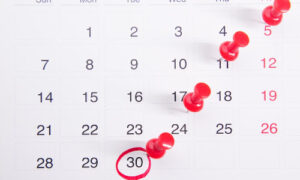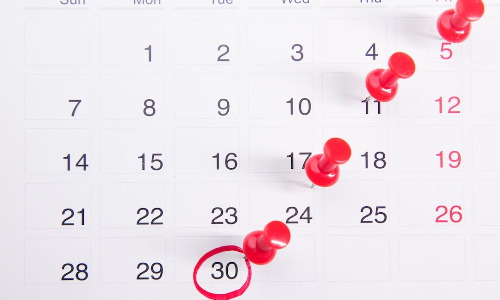(Warning: This blog post is non-technical but purely personal. I write openly about my current health issues. This blog might be triggering for people who struggle with, or lost dear ones to, cancer and other similar diseases.)
This is the fourth post in a series on my personal road from first signs of leukemia, through diagnosis and treatment, to, hopefully, full recovery. Click here to read all posts in this series.
I write this on Wednesday, September 21st. My third day as a hospitalized patient on chemotherapy. I was planning to write about the past three days but as I was writing I realized that the first day alone had been more eventful than it felt at the time. So this is just the diary entry for Monday, September 19th, the day I was hospitalized and started my chemotherapy.
Monday, September 19th
Checking in
My wife and I had agreed that she would just drop me off at the front door of the hospital. She definitely would have gone with me if I had asked but I didn’t. I expected it to be a long day with lots of waiting and a few tests, activities, and doctor visits and conversations in between. Turned out I was right, so this was the right decision. It allowed her to do some work (her employer has been more than forthcoming with offering her all the flexibility she needs in this period, and she expresses her gratitude by only using that offer when needed. Plus, work distracts her mind from our current situation, which is also a good thing).
I must admit, the walk from the front door to my ward, bearing a rucksack with my laptop, a weekend bag stuffed with clothes and other stuff, and a mask to prevent infection but also hamper breathing, was a stretch. My blood’s not pumping enough energy and oxygen to my muscles, and at times like that it shows. So I just took my time, walked very slowly, and eventually got there.

I checked in and was told to go to the same room where I had been before the weekend. That made me happy. Not because of that room specifically (though I must admit that its nice), but mostly because it’s a single-person room. There are also two-person and four-person rooms here, and I dreaded having to share my private space with a stranger. I like having my privacy. I like being able to tap at the computer at hours when normal people try to sleep. So I am really happy to have a private room again! I unpacked my bags, stuffed everything in the closet, set up my laptop, and started waiting.
Last stroll outside
From the day my hematologist had suggested to start exercising, I have tried to do two exercise moments each day, one in the morning and one in the afternoon. Preferably walks in the forest near where I live. Since I was not yet hooked up to any medical devices, I asked the nurses for permission to make a walk outside the hospital and they allowed it.
So I went out to enjoy what will probably be my last walk outside for a long time. The area around the hospital is not quite as enjoyable and relaxing as “my” forest. But it was good enough and I managed to get a nice long walk in.
PICC line
Later that day, I was taken to another area of the hospital, where I would be given a PICC line. PICC is short for Peripherally Inserted Central Catheter. You can find information about it on Wikipedia. What I understood is that a thin tube is inserted through the upper arm into a vein running there and then pushed all the way up until right above the heart, in the superior vena cava (which in Dutch is called the big hollow vein, but it seems there is no simple English name for it, just the Latin name).
There are two reasons for using a PICC line instead of a standard IV line (typically set in either the elbow area, or in the underarm just above the wrist). One is that the veins in the arm are much thinner and therefor more at risk of being damaged if the chemicals enter my body there; the superior vena cava is much wider (24 mm diameter) so less at risk, plus much more blood flows there so that the chemicals are immediately diluted. The second reason is that a PICC line can be left inside the body for a prolonged period of time, which is helpful in my case because I will probably be on the receiving end of chemicals, blood, and other fluids for a long time.
The procedure to put in the PICC line was probably over half an hour preparation, and then maybe five minutes of actually doing things. Like in any job, the saying ‘preparation is half the work’ is an understatement, for a job well done, preparation is almost all the work. Just as in query performance tuning, where we can spend hours pouring over execution plans and DMV reports to figure out the best indexing strategy or query rewrite, then just a few minutes to deploy the change. In my case the preparation time might have been prolonged because I kept asking questions – I always like to know more even when I’ll never use that knowledge. And this was truly first hand learning.
The confusing X-ray
I contemplated not even mentioning the chest X-ray that was taken on Monday as well because it’s not really an interesting procedure – except that something happened that I found rather funny.
I was offered to be brought there in a wheel chair but preferred to walk myself. A nurse would accompany me to help me find the way. He was rather annoyed when he found out I had not been given the questionnaire form in advance. He went to the nurses assigned to my ward and chastised them for not giving me the questionnaire in advance, then gave me the form and asked me to fill it out once we’d be in the waiting room.
He led the way. I followed. I saw signs, saying MRI. That surprised me. But I shrugged it off. He’s the nurse after all, I’m a patient. What do I know. I sat down with the questionnaire while the nurse walked off to inform the staff of my arrival.
Two minutes later he returned, clearly not happy with himself, or with the situation. There had been a mix-up, he said. His forms (he claimed) had specified that he had to take me to the MRI department. And so he complimented me on how far I already was with filling out the now useless form, then took it from me and tossed it in the bin.
Not much later we finally arrived at the Radiology department, where my chest X-ray was taken. I decided it was probably safer to use the posted signs to find my way back to my own ward rather than to wait for the nurse to return and take me to who knows where.
Lots of information
This part of the post is not strictly chronological. Both before and after the PICC line and X-ray procedures, I had been given a lot of information about the upcoming procedure. But also about chemotherapy in general. I have condensed all that information in this single part, because I think that makes it easier to process and understand.
For my procedure, I was now told that the information given previously (four week hospitalization consisting of one week chemo and then three weeks recovery; one week home; and then another four week hospitalization with a week of chemo and three weeks of recovery) is more a generic expectation. They’ll keep monitoring me and might adapt the plans. Sometimes recovery finishes faster. Sometimes there can be reasons to start the second treatment period sooner, in which case I won’t be home in between at all. All of that will be decided as and when daily tests are run and analyzed.
We also talked about when my treatment would start. Analysis of my bone marrow samples had shown that I did not have any of the specific versions for which clinical trials are currently held, so I did not have the option to opt in as a test subject. I would be given the standard treatment. There was a bit of unclarity about when to start, which came as a shock. I had really expected that we’d start that same day. But they wanted to check with the oral surgeon first to ensure that there would not be any negative interactions.
And then I also learned a lot about the side effects of chemotherapy. Many readers of this blog will, like me, be aware of many of the more common side effects. But did you know that they only start after quite a long time?
Immediate side effects
Now I’m not saying there are no immediate side effects at all. The most common side effects are nausea (basically the standard response of the body to any alien stuff in the blood: empty the stomach because that’s usually where it comes from, before even more can be absorbed into the blood), possible constipation, and the body might retain too much moisture (in other words, I might not pee enough).
For the nausea, they pre-emptively give me nausea suppressants, and if and as needed I can get additional tablets. For the constipation and peeing, they monitor how I’m doing by asking me and by weighing me twice a day. (Which, for someone my weight, is not exactly a comforting procedure 😉). And if needed I get additional medication to fix those issues too.
So yes, there are side effects. But they are relatively mild, and can be suppressed with medication.
Delayed side effects
So here’s why the better known and much harsher side effects only start later.
The chemicals used in chemotherapy are specifically designed to interfere with the process of cell division. So they don’t attack cells as they are innocently (or not so innocently) minding their own business in my body. They only attack in the exact moment that a single cell tries to divide into two new cells, and interrupt that process.
Cells age and die, so cell division is needed to ensure that dead cells can be replaced with new, healthy ones. Normally, in a healthy body, the speed of cell division is well regulated by the body’s internal systems, so that the amount of new cells is enough to replenish those that die.
But cancer (all forms of cancer) changes that. Cancer cells are cells where the cell division has gotten out of control, they just keep dividing even when not needed at all. Depending on the type and location in the body of the cancer, this can cause all kinds of effects. In my case, leukemia or blood cancer, it means that white blood cells (that form in the bone marrow, by division of stem cells) divide way too fast. Even before they are ready. So my blood has an enormous overdose of useless unfinished white blood cells, and way too little good ones. In addition, red blood cells and platelets are also produced from those same stem cells in that same bone marrow. The overeager production of bad white blood cells smothers the production process for red blood cells and platelets too, which is why I have insufficient of those as well.
Ideally, the chemotherapy would only prevent division of the cancer cells. And while they do indeed have a preference for them, science has not yet been able to develop chemicals that are picky enough to leave all other cells alone. They do also attack healthy cells and prevent their division too. Which is not very much of a problem for very slow regenerating tissue, such as for example cartilage. But it is for tissue that is renewed fast.
The body always has a supply of spare cells. And that’s the reason that during the week that the chemicals are poured into my body, I don’t suffer from this yet. The spares are used, all tissue still has enough cells. But the supply of spares is running low. I don’t doubt for one instance that the body will have monitoring tools, and that the DBA in my subconscious brain sees the level of spares go down and twists a knob to increase the division rate. But the chemicals prevent that extra production too, and eventually the spares run out completely. And that’s when the side effects start to show. Typically about a week and a half after the start of the chemotherapy, so in my case actually a few days after the administration of the actual chemotherapy ends.

As mentioned, this affects the fast renewing cells. Such as for instance mucous membranes. Such membranes exist in my nose and mouth, which can cause in change of taste and smell; in my esophagus, where there shortage can cause nausea; and in my intestines, where it is likely to cause severe diarrhea. Another affected area are the hair roots, and shortage of new hair cells is what causes the well known loss of body hair. So enjoy the attached picture, it might well be the last of me with the hairdo I’ve been sporting for the last 35-ish years.
And, because why not, blood cells are also of the fast renewing kind. I’ll be running out of red blood cells, white blood cells, and platelets again. And these are even harder for the body to renew because as I understand it, my stem cell count will be low too. So now they body first has to produce new stem cells, and then produce new healthy blood.
This is called “the dip” – and no, that is not a reference to how I will be feeling, it’s simply because it’s a period where the graphs of all those cell types bottom out. And this dip is the reason for my prolonged hospitalization. During this period, they’ll be constantly monitoring my blood values and my health, and I’ll probably receive lots of donor blood. But even so, this is the period where I can be expected to be very tired, in addition to all those other great side effects that I have been promised.
The official start
Luckily, after consultation with the oral surgeon, the decision was made to start my chemotherapy treatment on Monday already. And, of course, that was way more convoluted than I had expected. It started with the nausea suppressant, that apparently is given intravenously, through the PICC line. That takes about 15 minutes or so, and then there’s a washing cycle, where a clear salt solution is administered to clear the line, and that lasts a few minutes. After that, I get the first type of chemo, a bright orange fluid that runs for about an hour and that has a very interesting effect on the color of my pee. That’s followed by another washing cycle, and then finally the second type of chemo is attached to my PICC line. This is a transparent fluid and it runs for 22 hours. After that, the cycle restarts. So every afternoon, I have a period of approximately two hours where my IV machine keeps beeping, I keep pushing the red button, and nurses keep running in and out to do replace fluid bags or open and close valves. And then it’s back to “normal” again.
Stem cell donors
Just as I thought the rest of the day would be relatively quiet, another nurse entered my room. She wanted to talk to me about the procedure of stem cell donation.
I had already received a lot of information the week before, from the hematologist. So a lot of what I heard was a repeat. But some was new.
I myself have registered as donor over thirty years ago. The procedure, then, in case I would have been a match and would have still been willing to donate, was to extract some bone marrow using a bone marrow puncture. Having undergone two of those recently, I can confirm that this is an annoying and slightly painful procedure, and that you might need a few days to recover. But apparently, this procedure is currently hardly in use anymore, in 99% of the cases a less intrusive procedure is used.
For the new procedure, the donor is given two injections daily during a week. These injections cause their stem cells to divide at an increased rate. Normally stem cells never leave the bone marrow, but because if the increased division rate, they overflow into the veins. This does no damage. After that week, the donor is attached to a machine that draws blood from their veins, filters it to extract the stem cells, and pumps the filtered blood back in the body. This lasts for a few hours. And then they’re done, though there will of course be a few routine checkups at set periods after the donation.
And then the nurse repeated what I had already heard from the hematologist: the first group of people that are typically potentially stem cell donation candidates are full brothers and sisters of the patient. Since they have the same parents, there’s a 25% chance for them to be a match. Parents or children are not likely to be a match at all, since that’s simply how genetics work. I have half the genes of my father and half of my mother, so I am 50% different from each at this genetic level. Similarly, my children have 50% of my genes and (luckily for them!) the other 50% of my wife’s genes. So if there are no brothers or sisters willing to donate, healthy enough, and hitting that 25% chance, then the next step is to search in the world wide database of registered stem cell donors. (By the way, if you are not registered yet and would like to, you can find more information here or here.)
I had been given this information a week before. But I had not yet reached out to my brother and sister. I thought it was way too early. After all, I was told I’d first have eight weeks of chemo and it would only be possible to determine if I’m eligible for stem cell donation after that period. I felt that asking my brother and sister in this stage already would feel, at least too me, too much like I’m applying moral pressure. But the nurse told me that the hunt for a matching donor can take a long time and that it’s essential to start searching now already, before it’s even known whether it will be needed at all.
So that evening, with still somewhat of a heavy heart because I would rather not have asked them this, I sent my brother and sister a message with an explanation of the process, and the request. How do you ask something like this of your own family without applying any moral pressure? I don’t know. I didn’t want to but it’s always there. To maximize their freedom to make their own choice, I insisted that they informed me privately of their choice. And I will of course respect that privacy so I won’t disclose their answers here.
Tired
After all of that, I was tired. Very tired. Not physically but mentally, from all the information that I had tried to absorb throughout the day. I decided that this one time I could skip my afternoon exercise (especially because it was already evening). So I tried to relax a bit and went to bed early.






3 Comments. Leave new
I can understand that you are tired, in addition to the treatments you receive, you also write such a detailed blog. I didn’t know that so many things happen during such treatment in a hospital. Thanks for the update.
Thinking of you and wishing you all the very best, Hugo.
Wishing you a speedy recovery. I went through leukemia and chemo too. 4 years now in remission. I remember the slow seemingly interminable walks. Which felt like I was trying to climb a mountain – no just a short slope up to the car park. Watch out for the gout (all those dead cells gotta come out, not fast enough and the detritus clogs up arteries with the crystals) and most of all for Sepsis. I had HCL which is pretty rare and very, very slow but also difficult to spot (estimated to have had for ~10 years before a complete collapse).
Good luck.